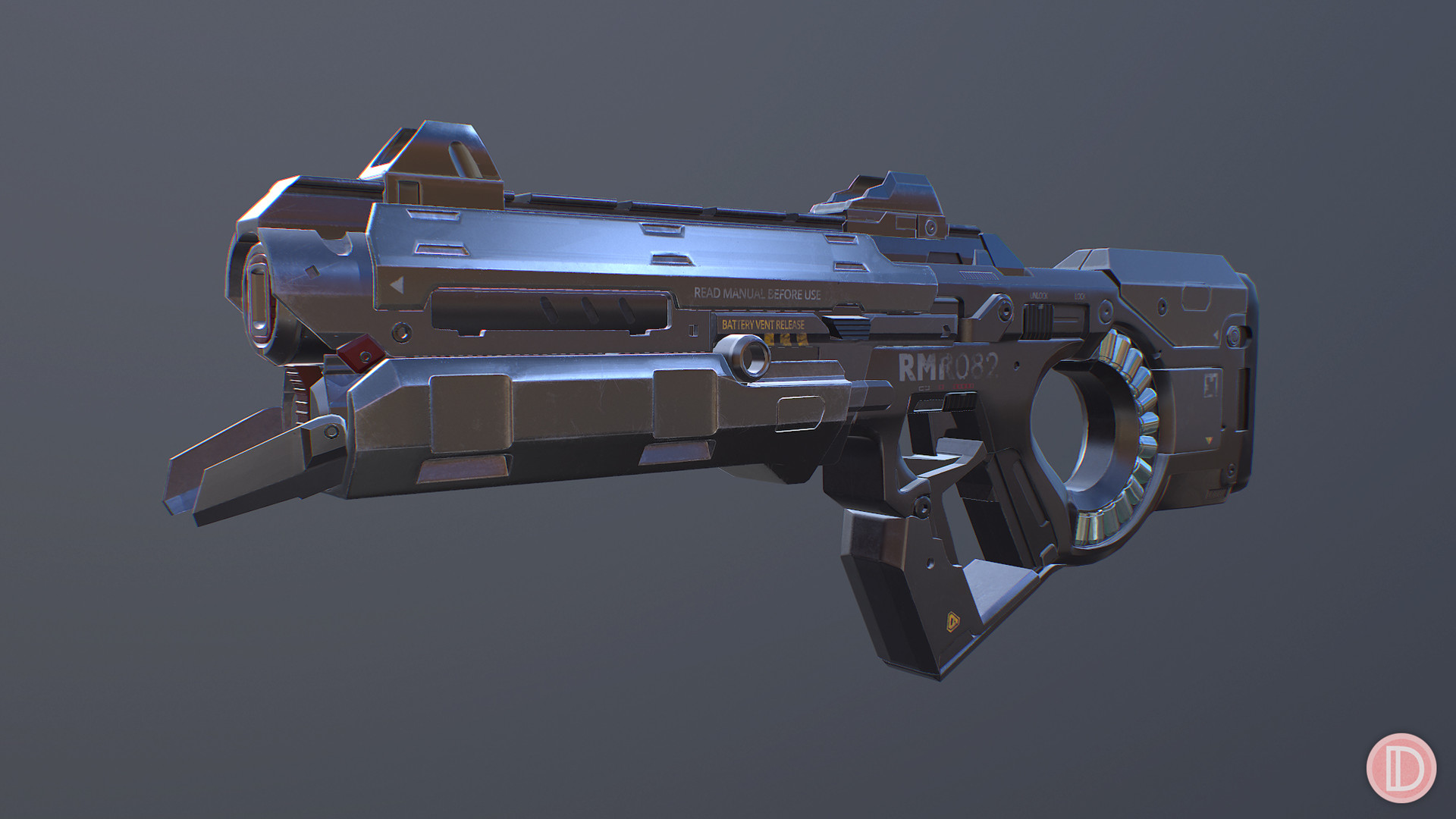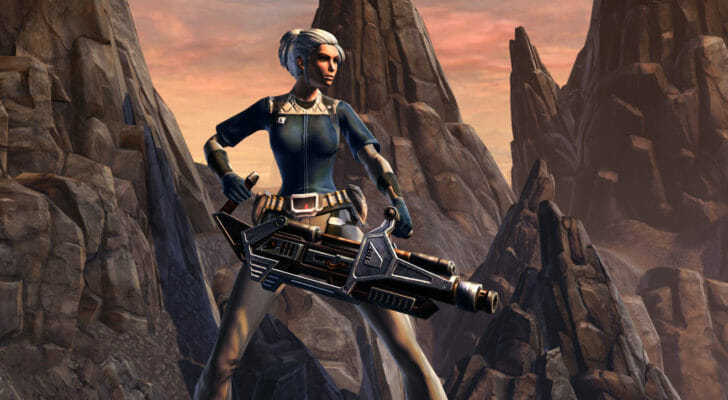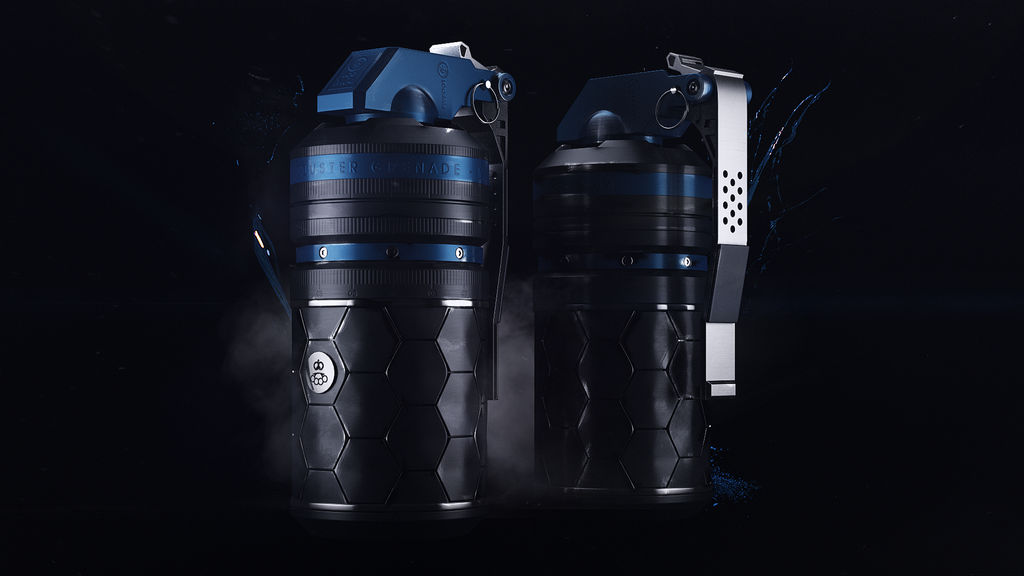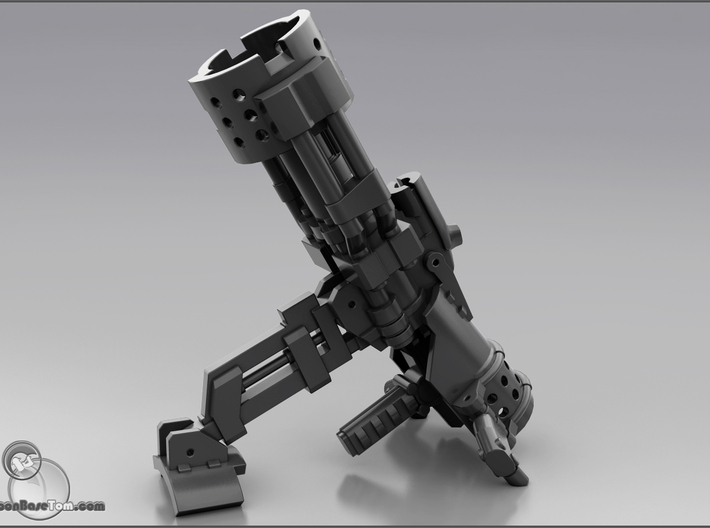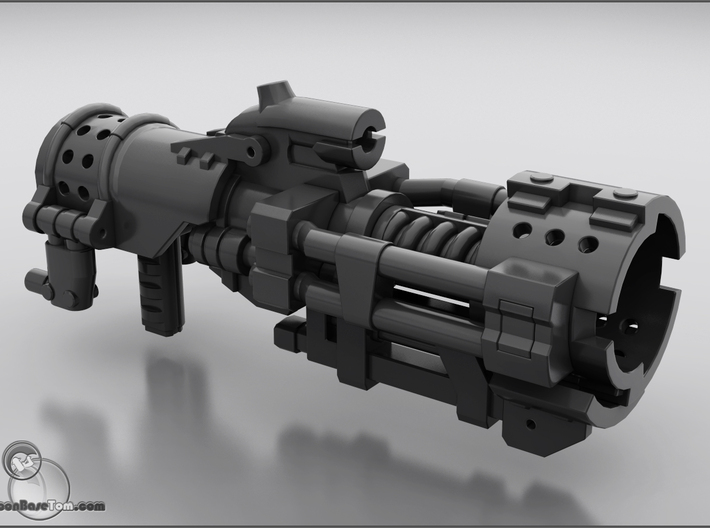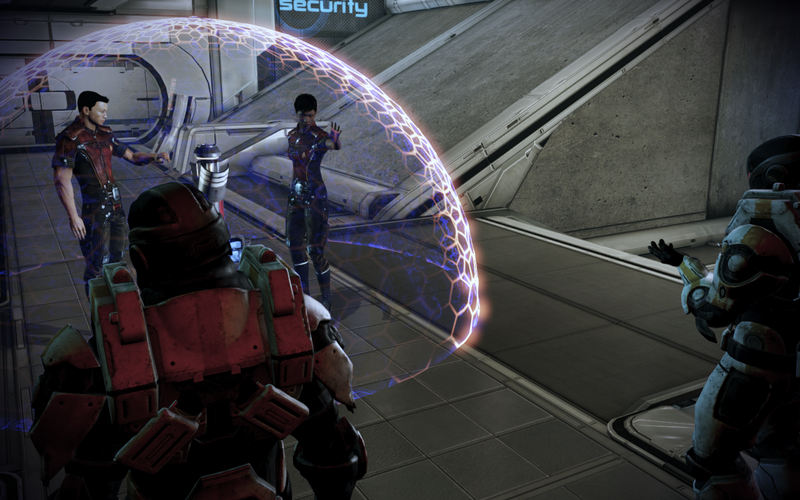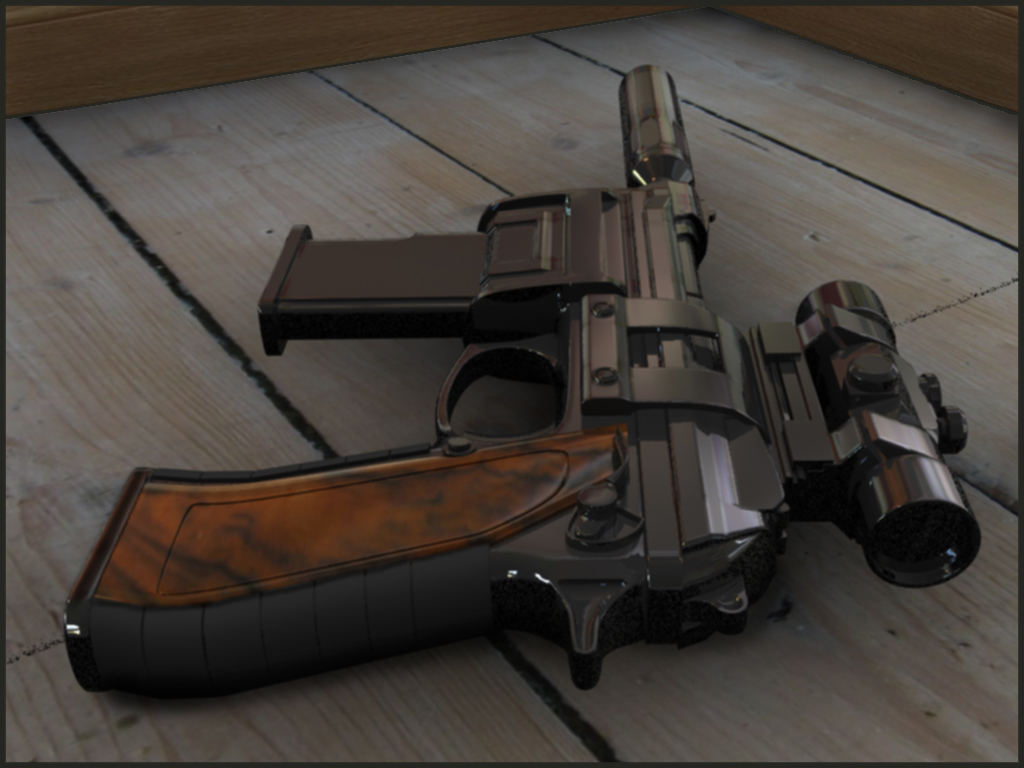Directorate Officer

OUT OF CHARACTER INFORMATION
Intent: To provide a set of basic power armor in Lucerne Personal Defense's line-up
Image Source: Star Citizen Power Armor
Canon Link: N/A
Restricted Missions: N/A
Primary Source: N/A
Manufacturer: Lucerne Personal Defense
Model: Gundark-class Power Armor
Affiliation: Directorate, Silver Jedi, Closed Market
Modularity: Yes
Production: Minor Production
Material: Armorweave, Insulfiber, Duraplast, Plasteel, Laminasteel, Beskar exoskeleton frame, servomotors, Repulsorlift, Ceraglass faceplate, Biolux-series Organoform Circuitry
Classification: Multi-purpose Heavy Armor
Weight: Very Heavy
Resistances
- Kinetic: High
- Lightsabers: Low
- Environmental: Average
- EMP/Ion: High
SPECIAL FEATURES
Power Armor: Gundark uses an skeletal frame composed beskar which is joined together by servomotors that are fed by the suit's power supply. This provides the user with between two to three times their normal physical strength. While this is not as powerful as many power armors, Gundark partially compensates for this by focusing on retaining much of the user's natural grace and agility. Gundark's onboard computer is designed to learn their user's typical movement patterns, making the suit much more responsive and instinctive to use than many of its counterparts. This also makes the suit smaller and lighter, making it easier to use when unpowered or in certain environments.
Repulsorlift: Like The older AV-1A, the Gundark incorporates a built-in repulsorlift to help lighten the armor's load. It also can slowly allow the Gundark to rise and fly up to a 1 kilometer in altitude. Many users also use this repulsorlift as a braking device when deploying from flying vehicles and starships. It also can be used as an aid to move through waters and other liquids.
Composite Construction: Gundark uses a set of composite plates that integrally attached to power armor's beskar exoskeleton. Each plate is constructed using a standardized process designed to maximize the effectiveness of each individual material within the armor. Each plate consists of a laminasteel lattice which holds several duraplast inserts which may be hollow to allow circuitry and wiring to run through. This unit is this placed in mold into which molten plasteel is poured under intense pressure to form the remaining bulk of this plate. The laminasteel wire frame essentially works like miniaturized slat armor, making it useful against against small explosive projectiles, melee weapons, and slugs. Additionally, it can act as a farraday cage for components integrated into the armor plate itself. However, most of the EMP/Ion protection afforded by the armor is the results of the duraplast inserts, which provide most of the overall protection afforded by the armor. The outer covering of plasteel provides additional resistance to the armor, especially to heat based weapons such as blaster rifles. The bodyglove uses a blend of armorweave and insulfiber to provide a base layer to help reduce damage that penetrates through the plates and to insulate the wearer from the environment.
NiteSite/TIN Network HUD: Gundark uses an integrated NiteSite-based HUD systemhttp://starwars.wikia.com/wiki/NiteSite_infrared_motion_sensor, providing users with zoom capability, low level vision, and integrated targeting capability that is especially useful with the suit's vambrace-mounted devices. Gundarks can be linked to each other and relay real time information to each other in a form of a Target Identification Network first pioneered on assassin droids. This provides users with an unusual situational awareness and additional sensor/targeting information that might not be immediately available through the helmet's own sensors because of either range or obstacles.
Modular Vambrace Hardpoint: Both of the Gundark's vambraces are designed with mounting recess that allow it to integrate a single small weapon (typically any pistol-grade weapon) or small device. Typical weapons that can be added include a MM9 Wrist Rocket Launcherhttp://starwars.wikia.com/wiki/MM9_rocket_system, Dur-24 wrist laser, and ZX miniature flame projector. Commonly used devices include the Repulsor Grappling Gun, fusion cutter, and Magnaforce security shield. Each mounting point includes power socket and a datalink, allowing the device to not only be powered by the suit, but be fully integrated into the suit's HUD system as well.
Modular Backplate: Gundark's backplate has modular fittings and power couplings that allow it to accept and integrate off the shelf equipment such as jetpacks, rucksacks, personal shield generators, and other like devices.
Redundant Powercells: The Gundark has an octet of power cells encased in armored compartments on the armor's back. They not only provide power for the basic functions of the suit, but also can provide power for any devices attached to the suit. These power cells can be changed out in the field with assistance.
Basic Environmental Protection: Like many common battle armors such as stormtrooper armor, Gundark provides limited protection from hostile environments. Each suit is vacuum proof and provides some insulation through the use of the base insulfiber-armorweave body glove. Gundark armor also incorporates air filtering through an atmosphere processorhttp://starwars.wikia.com/wiki/Atmosphere_processor as well as a 40 minute atmosphere supply, allowing troopers to operate for a limited time in hazardous atmospheres or in a complete lack of breathable atmosphere.
Integrated HUSH-98 Comlinkhttp://starwars.wikia.com/wiki/Hush-98_comlink/Legends: This comlink is integrated into the helmet in a manner similar to comlinks found in stormtrooper helmets.
Enhanced Performance: Gundark notably increases the strength of the user, making the user significantly stronger than they would be otherwise.
Fortified: Gundark has been designed to be particularly resistant to some of the more widely used weapons on the battlefield: blasters and slugthrowers. The suit is also designed to be ion and EMP hardened, allowing it to operate effectively on worlds like Moorja which are wracked by electromagnetic storms or against opponents who widely use EMP or ion weapons. This same protection also provides protection to users of the suit who may be vulnerable to Ion/EMP weapons, such as droids or cyborgs.
Modular: Gundark builds off of the Anakkona's penchant for modularity, specifically incorporating a pair of modular hard points on either vambrace to integrate small weapons and devices as well as a hard point on the back to mount larger devices such as jetpacks or shield generators.
Target Identification Network(TIN): Gundark is specifically designed to work in numbers, where multiple suits can provide different vantage points to provide more comprehensive views and awareness of the environment to users. Not only does this provide information that might not be readily be apparent from a certain vantage point, but it also serves as a back-up in case one of the Gundark's sensors is damaged.
Bulk: While less bulky than many power armors, Gundark is still bulky enough the natural speed and dexterity of most users is more limited than it would be if they weren't wearing the armor.
Weakpoints: Gundark has several weak points. The ceraglass faceplate, while capable against many low-powered weapons, is particularly vulnerable to most rifle-grade weapons compared to the rest of the armor. Many of the inner-facing joints, such as the cubital fossa, are also only protected by the body glove. The popliteal fossa is similarly ill-protected.
Broadcasted: Using the TIN means that the suit is constantly transmitting, making the suit and its wearer easy to locate with the right equipment. It can also be jammed by communication's jammers, which effectively removes the advantage posed by the TIN.
Gundark Power Armor is Lucerne Personal Defense's entry into the power armor market. Loosely based on the concepts of the older AV-1A Assault Armor, Gundark is designed to be more of a minimalist set of power armor with instinctive features that would not require a lot of extra training for end-users to use. Lucerne Personal Defense accomplishes this though an intuitive HUD system and an onboard computer that learns its user's movement patterns to improve response times. The physical elements of the suit itself help as well. Being relatively lightweight for a set of power armor because of its lack of bulk and repulsorlift system, most users barely notice a drop in their physical running speed. Unlike some old power suits like the AV-1A which require a lot special training to use, the Gundark's other basic systems are actually common battle armor features such as a HUD system, modular mounting hardpoints, an integrated comlink, and basic environmental systems.
The base layer of Gundark is a blended insulfiber-armorweave body glove, which primarily acts as a secondary armor layer to reduce the damage wrought by attacks which pierce through the main armor plating as well as provide cushioning for the body in the case of falls and other physical impacts. The body glove also acts as basic insulation for the wearer against temperature variance, though it is not as capable as dedicated environmental suits. A beskar exoskeleton frame then acts as an is then linked to t this body-suit by magno-clasps. This frame is then covered in laminated composite laminasteel/duraplast/plasteel plates which provide the bulk of the suit's protection against most battlefield threats. Its unusual construction provides the wearer with good protection against blasters, slugthrowers, and ion weapons. This protection is somewhat less than that afforded by the AV-1A, but is certainly step over common battle armors like the older Katarn series armor worn by Clone Commandos or lower grade Mandalorian battle armor. This durability comes with some bulk, but the powered exoskeleton combined with use of a repulsorlift largely removes much of the basic encumbrance for a suit of its weight. Even without these systems, users can walk around in the suit, though they will find their movement speed noticeably slower and producing great fatigue during extended use. But users find that the suit has more to offer than just its protection and enhanced strength.
The most obvious of these other benefits is the inclusion of the NiteSite Infrared and HUD system into the suit's helmet. On its own, the Nitesite provides enhanced visual acuity, including in low-light conditions, motion sensors, polarizing lenses, and a targeting computer that can be directly linked to the user's weapons. This makes it largely comparable to the MFTAS found on stormtrooper armor. Looking to gain an advantage in that field, LPD revisited the TIN concept pioneered by assassin droids and popularized by the Floating Fortress. The LPD version links multiple NiteSite units over the armor's integrated comlink, allowing the HUD to display data and feed gathered by other nearby users (typically members of the same squad). This allows increased awareness surroundings in spite of obstacles or a lack of range. It also can provide auxiliary targeting information if the user's own sensors are damaged. Perhaps the armor's second most popular feature is the inclusion of a pair of vambrace hardpoints, complete with their own datalinks and power sockets. These hardpoints provide users with some versatility in outfitting their suits for particular mission requirements. It's not unheard of to see an armor equipped with wrist rockets and wrist lasers for an assault mission, only to see the loadout be changed later on to a grappling gun and a plasma cutter to explore the wreckage of a starship later on. The armor's backplate is similarly modular, allowing the armor to integrate several larger devices, such as jetpacks, rucksacks, or larger personal shield generators including Lucerne Personal Defense's own Myntor Personal Shield. While the gauntlet hardpoints are typically plug and play, it typically takes a little more tinkering to properly integrate the controls of the backpack device to the suite's HUD system.
As a relatively basic set of power armor, Lucerne Personal Defense is aiming for the low-cost end of the market, particularly governments and private military contract companies where quantity and cost are higher priorities than the latest bells and whistles. Unsurprisingly, one of the first adoptors of the Gundark has been the Directorate, who has started to issue the suit to many of its marine assault teams for use in boarding actions.









